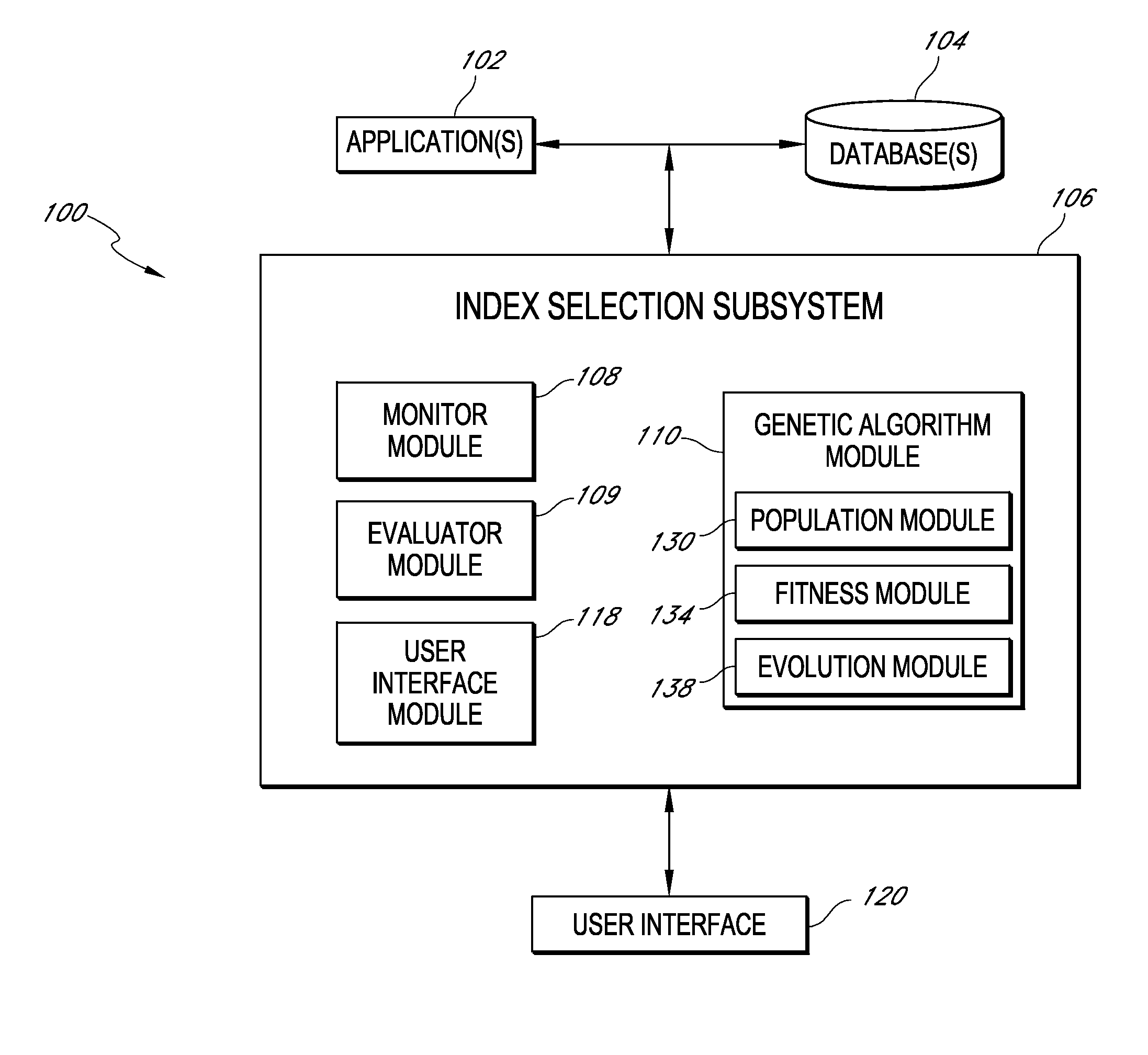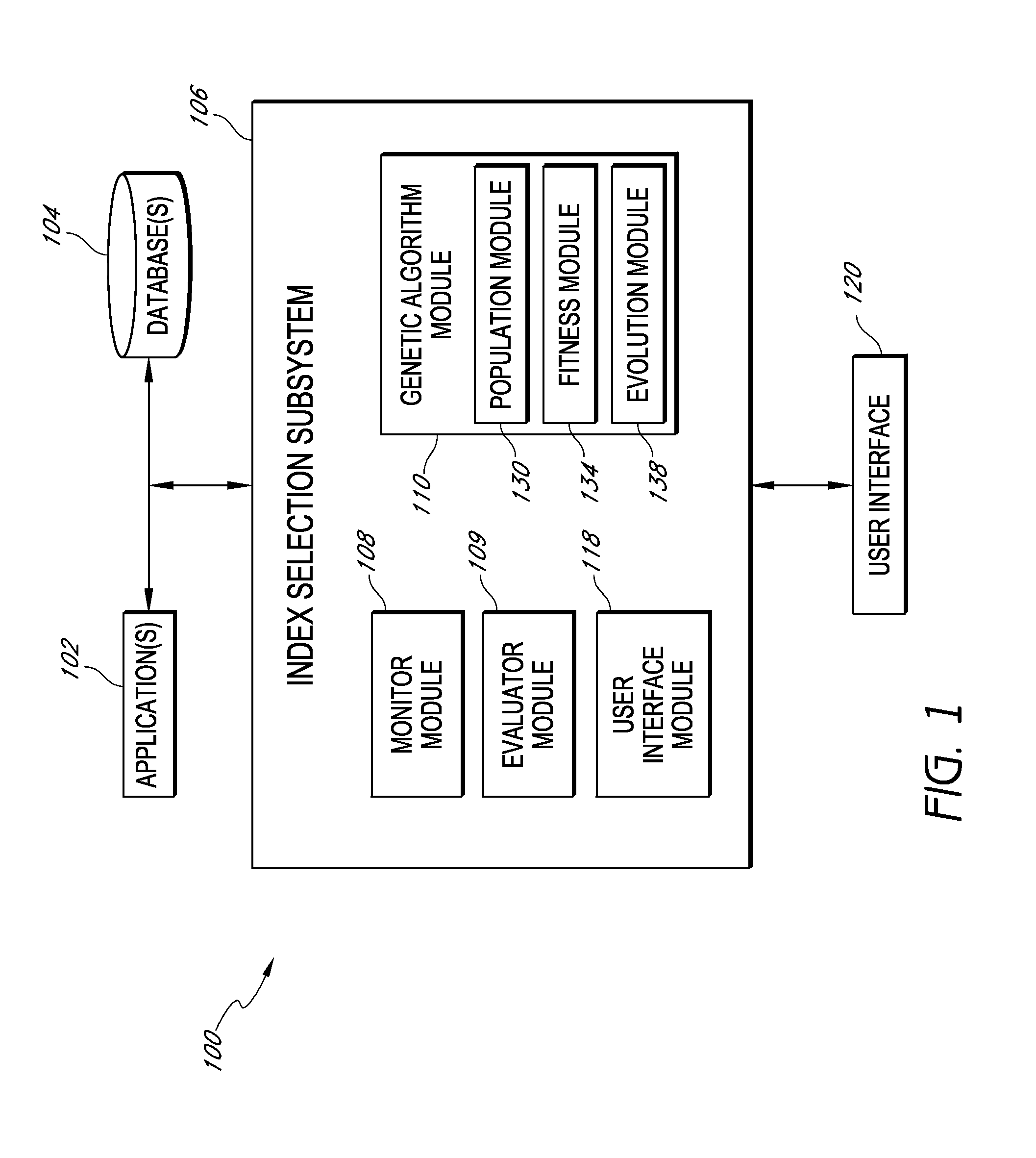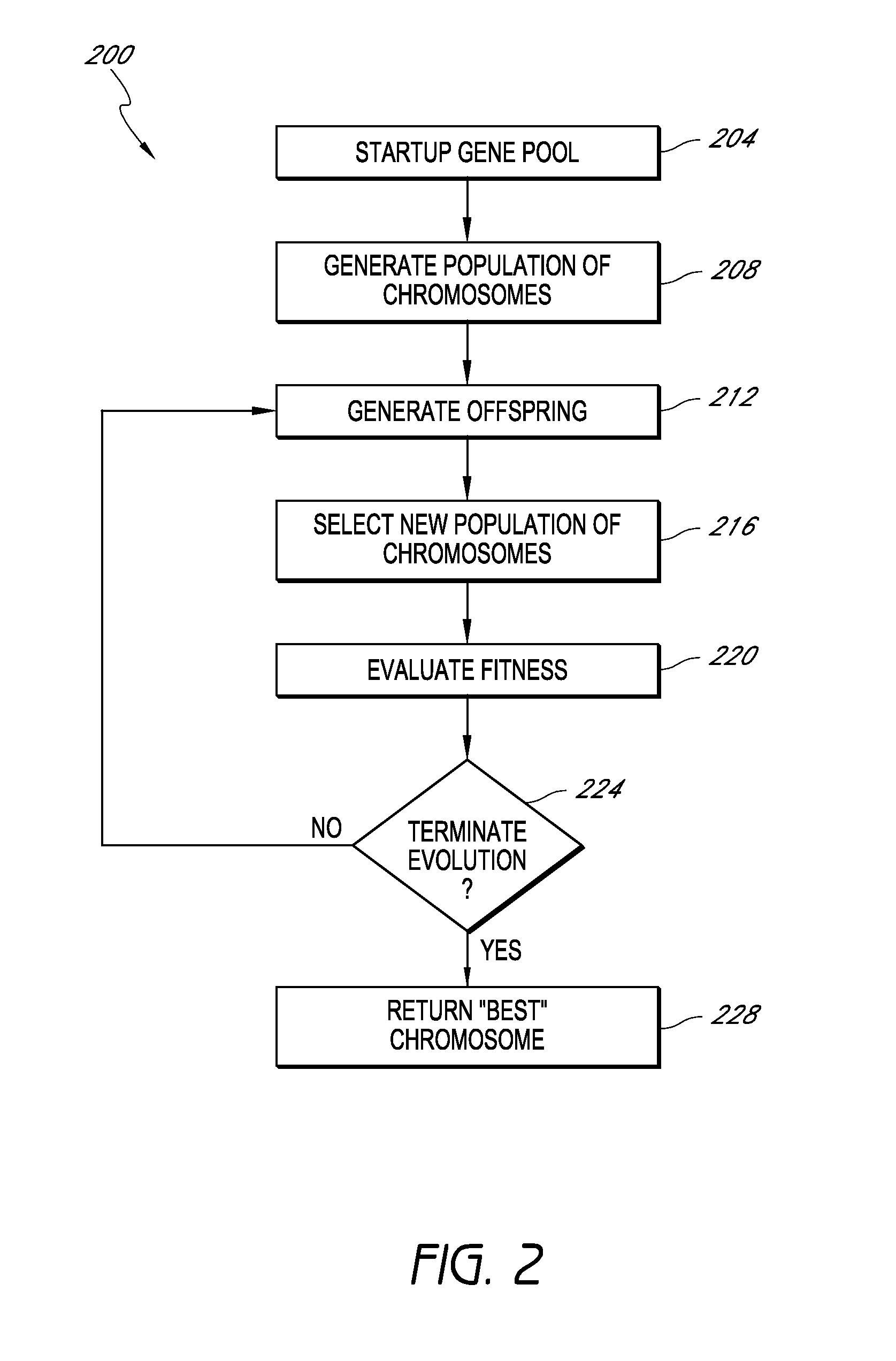Systems and methods for index selection in collections of data
a technology of data collection and index selection, applied in the field of systems and methods for organizing a collection of data, can solve the problems of computational difficulty in finding an efficient or optimal index configuration (e.g., a set of indexes) for a target database, and the number of possible index configurations for such a database can be enormous, so as to achieve the length of the chromosome and/or the number of chromosomes, reduce the time, and improve the effect of performan
- Summary
- Abstract
- Description
- Claims
- Application Information
AI Technical Summary
Benefits of technology
Problems solved by technology
Method used
Image
Examples
case 2
[0035] Concatenated for 2 and 3 Candidates Index Selection Permutation Example:[0036]Any 2 and 3 candidates from Employee table[0037]P(3,2)=3! / 2!=3[0038]P(3,3)=1[0039]Any 2 candidates from Department table[0040]P(2,2)=1
[0041]In this illustrative example, the overall possible combination of index configurations for the three example SQL statements is at least 31+3+1+1=36, and this number could increase because permutations have not been counted for Case 1 and Case 2. In a typical production application database, there are likely to be hundreds of tables and thousands of SQL statements. The potential index configuration can be huge. Thus, finding the best indexes or nearly the best index configuration is a challenging problem. Accordingly, embodiments of the index selection technology disclosed herein use a genetic algorithm to efficiently search for an improved or optimal index configuration for a database.
[0042]In addition to addressing the problem of the larger number of index cand...
PUM
 Login to View More
Login to View More Abstract
Description
Claims
Application Information
 Login to View More
Login to View More - R&D
- Intellectual Property
- Life Sciences
- Materials
- Tech Scout
- Unparalleled Data Quality
- Higher Quality Content
- 60% Fewer Hallucinations
Browse by: Latest US Patents, China's latest patents, Technical Efficacy Thesaurus, Application Domain, Technology Topic, Popular Technical Reports.
© 2025 PatSnap. All rights reserved.Legal|Privacy policy|Modern Slavery Act Transparency Statement|Sitemap|About US| Contact US: help@patsnap.com



